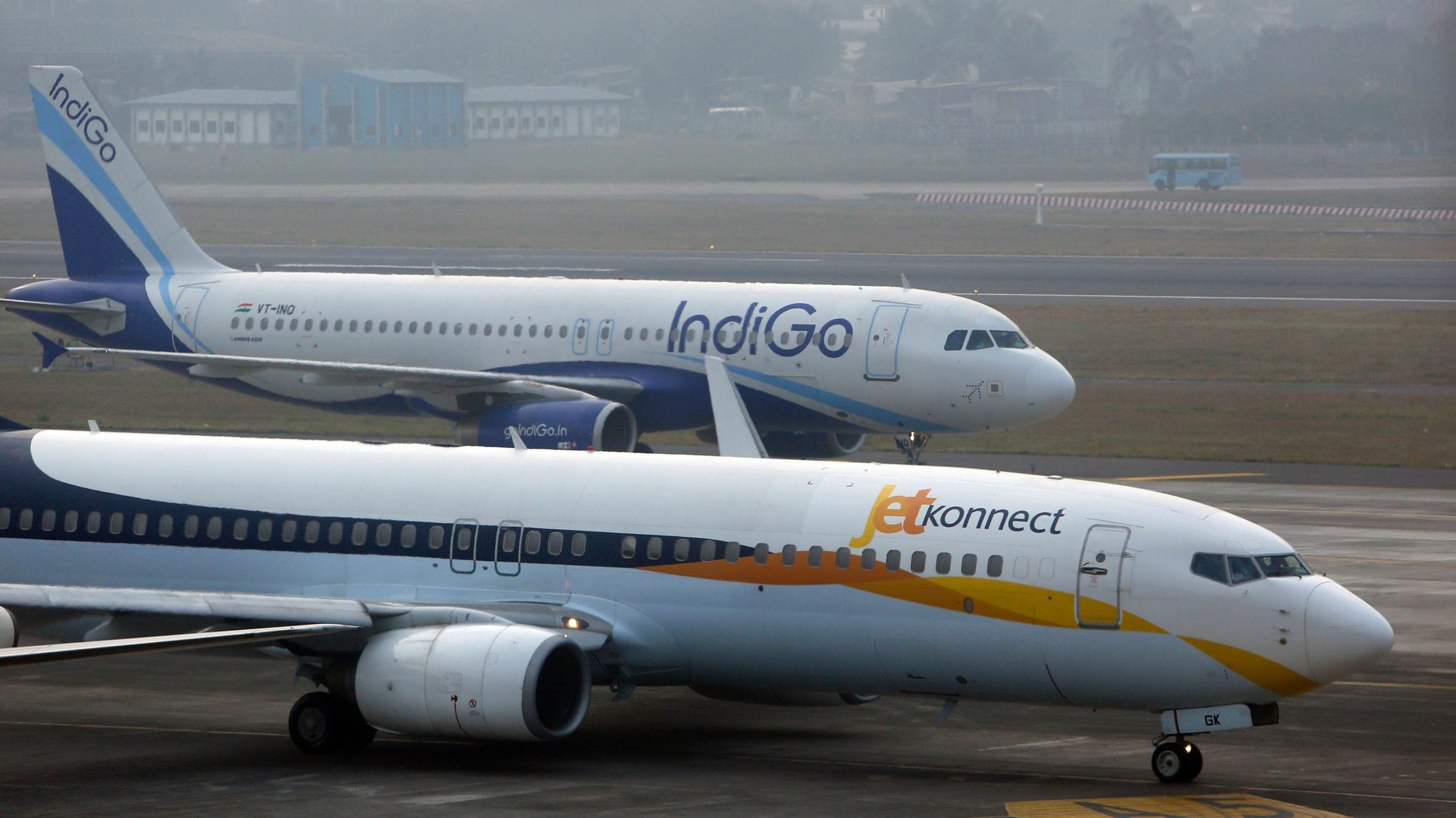Boeing advises India’s airlines to pursue profit over growth
The world’s largest aircraft maker has a message for bleeding Indian airliners: forget growth, seek profitability.


The world’s largest aircraft maker has a message for bleeding Indian airliners: forget growth, seek profitability.
“Double-digit growth, coupled with losses, is what I am concerned about…I will forego 2% to 3% growth for making money rather than filling up my airplane at rock-bottom prices and never making money,” Dinesh Keskar, senior vice-president for Asia-Pacific and India sales at Boeing Commercial Airplanes, said yesterday (Dec. 19) at Boeing’s market outlook presentation in New Delhi.
India is the world’s fastest-growing (paywall) aviation market. Yet most of its leading domestic airlines are bleeding as they continue to offer low prices to attract more customers. Airfares in India are around 15% below the breakeven point, according to some estimates.
In October, the industry registered 50 straight months of double-digit growth in domestic air passengers. This month, the number of monthly passengers flying on domestic airlines is likely to cross 12 million, Keskar said.
But this growth does not reflect on the balance sheets of the major carriers.
For instance, in October, IndiGo, India’s largest airline company by market share, reported losses for the first time since its listing three years ago. For the quarter ended September, its losses stood at Rs652 crore ($89.1 million). During this period, the country’s oldest private airline, Jet Airways, posted a standalone net loss of Rs1,297 crore.
In fact, the industry’s finances are so bad that state-run Air India and Jet Airways are scouting for investors to keep them afloat.
Besides dirt-cheap fares, these airlines are also battling high jet fuel prices and a weak rupee. Aviation turbine fuel (ATF) prices in India have risen nearly 33% since January while the rupee has fallen by over 9% against the dollar since then.
Given this situation, Keskar of Boeing said, “It is important that a discipline comes to the fares.”
Analysts believe these airlines are realising their mistake and taking corrective steps. “Now they are trying to provide a more uniform, median pricing. If a seat is booked three months in advance, the fare is almost similar to what it is when booked a month in advance,” said Ashish Nainan, a research analyst at CARE Ratings.
Shower jets
Despite the headwinds, Boeing has raised its long-term order forecast for jets from India to a record high.
The company estimates that Indian carriers will add up to 2,300 new planes by 2037. This could be worth up to $320 billion for manufacturers such as Boeing and its European competitor Airbus.
In July, India had a commercial fleet size (pdf) of 620 planes. All private carriers in the country have placed orders to nearly double their fleet size in the future.
Given the rise of low-cost carriers in India, Boeing expects that most of the long-term demand will be for single-aisle jets.
India’s woefully inadequate airport infrastructure can help the demand for widebody jets that carry more passengers than the single-aisle ones.
“Both Jet and SpiceJet are looking at a bigger airplane as the slots become tough to get in India in airports like Mumbai and Delhi, and secondly, you will need more capacity for market share,” Keskar said.